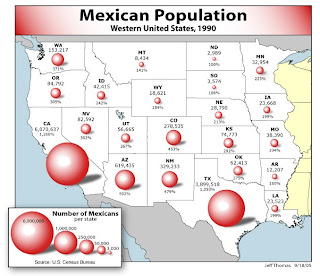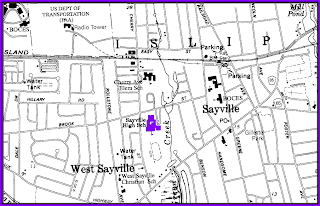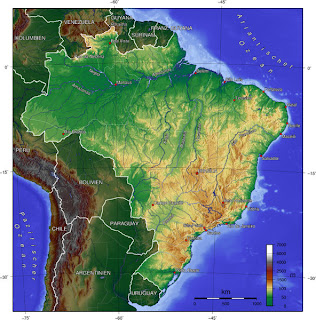
This is a Flow map. Flow maps show the movement of objects from one location to another, such as the number of people in a migration for example. In this illustration, it shows where offices will migrate to from its original headquarters.
 This is a Proportional circle map. This type of map will illustrate data in relation to the size of circles. In this map, you can see that Mexicans have a higher population in Texas and California.
This is a Proportional circle map. This type of map will illustrate data in relation to the size of circles. In this map, you can see that Mexicans have a higher population in Texas and California.

